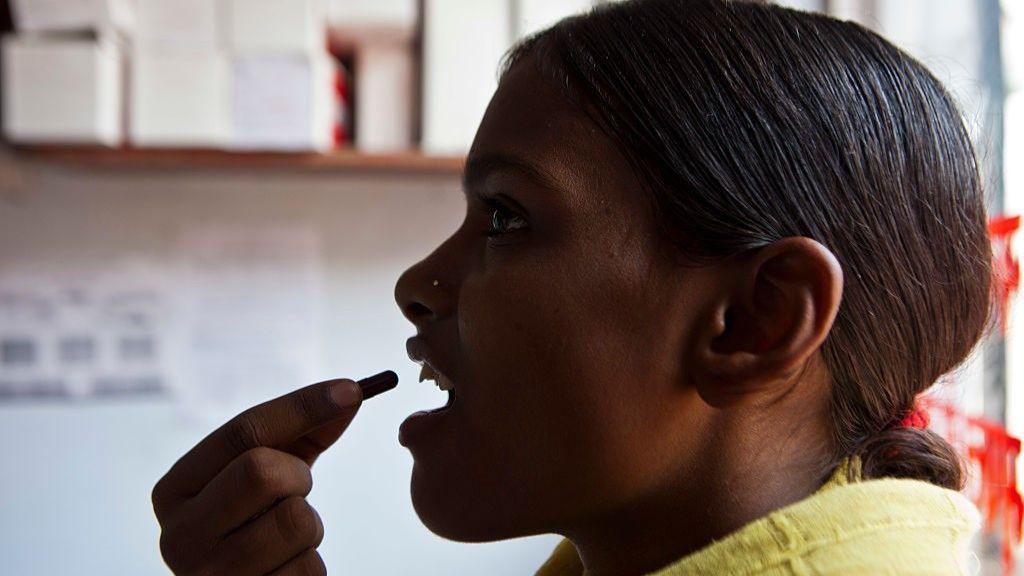A critical paradox exists in global healthcare, as noted by medical professionals.
Antibiotic overuse is driving resistance and the emergence of deadly superbugs. Simultaneously, individuals are perishing due to inadequate access to these life-saving medications.
A recent study by the Global Antibiotic Research and Development Partnership (GARDP) examined antibiotic access for approximately 1.5 million cases of carbapenem-resistant Gram-negative (CRGN) infections across eight low- and middle-income countries, including India, Brazil, and South Africa. CRGN bacteria are superbugs resistant to last-resort antibiotics; however, only 6.9% of patients in the studied countries received appropriate treatment.
India accounted for the majority of CRGN infections and treatment attempts, securing 80% of the studied antibiotic courses but achieving a treatment rate of only 7.8% of estimated cases, as reported in the study published in *The Lancet Infectious Diseases*. (A full antibiotic course encompasses all necessary doses for complete infection treatment.)
Gram-negative bacteria, prevalent in water, food, the environment, and the human gut, cause infections like urinary tract infections (UTIs), pneumonia, and food poisoning.
These bacteria pose a significant threat to newborns and the elderly, particularly impacting immunocompromised hospital patients, often spreading rapidly in ICUs and proving challenging, or impossible, to treat. Carbapenem-resistant Gram-negative bacterial infections are especially difficult to manage due to their resistance to powerful antibiotics.
“These infections are a daily reality across all age groups,” explains Dr. Abdul Ghafur, an infectious disease consultant at Apollo Hospital in Chennai, India. “We frequently encounter patients for whom no antibiotic is effective, resulting in death.”
The irony is stark. While global efforts focus on curbing antibiotic overuse, a parallel tragedy unfolds in less developed nations: preventable deaths from treatable infections due to inaccessibility of appropriate medications.
“The prevailing narrative has long emphasized antibiotic overuse; however, the reality is that numerous individuals in low- and middle-income countries with highly drug-resistant infections lack access to necessary antibiotics,” states Dr. Jennifer Cohn, GARDP’s Global Access Director and the study’s senior author.
The study analyzed eight intravenous drugs effective against carbapenem-resistant bacteria—ranging from older antibiotics like Colistin to newer ones such as Ceftazidime-avibactam. Tigecycline was the most widely used among the limited options.
Researchers attribute the treatment gap to weak healthcare systems and limited access to effective antibiotics.
For instance, only 103,647 full Tigecycline treatment courses were procured across the eight countries—significantly fewer than the 1.5 million patients requiring them, highlighting a major deficiency in the global response to drug-resistant infections.
What hinders access to appropriate antibiotics for patients with drug-resistant infections in India?
Physicians cite multiple barriers: reaching suitable healthcare facilities, obtaining accurate diagnostic tests, and accessing effective drugs. Cost remains a significant obstacle, with many antibiotics priced prohibitively for low-income patients.
“Those who can afford these antibiotics often overuse them; those who cannot, receive none at all,” says Dr. Ghafur. “We need a system ensuring access for the poor and preventing misuse by the affluent.”
To improve access, affordability must increase. To prevent misuse, robust regulation is vital.
“Ideally, every hospital antibiotic prescription should require a second approval—by an infection specialist or microbiologist,” suggests Dr. Ghafur. “Some hospitals employ this; most do not. Proper oversight can establish this as standard practice.”
Addressing both access and misuse requires smarter policies and stronger safeguards, researchers emphasize. However, access alone is insufficient; the pipeline of new antibiotics is dwindling. The decline in antibiotic R&D and limited availability of existing drugs pose a global challenge.
India carries a substantial global burden of antimicrobial resistance (AMR), but it also holds potential for combating it—both domestically and internationally, researchers suggest.
“India is also a major market for new antibiotics and can effectively advocate for the development and access to new antibiotics,” says Dr. Cohn. With its strong pharmaceutical foundation, the country is becoming an AMR innovation hub, from promising new antibiotics to advanced diagnostics.
Dr. Cohn suggests India can strengthen its antibiotic response by generating local data to better assess needs and identify care pathway gaps.
This enables more targeted interventions to improve access to appropriate drugs.
Innovative models are emerging—Kerala state, for example, employs a “hub-and-spoke” approach to support lower-level facilities in managing serious infections. Coordinated or pooled procurement across hospitals or states could also reduce the cost of newer antibiotics, mirroring successful cancer drug programs.
Without access to the right antibiotics, modern medicine faces destabilization—doctors risk losing the ability to perform surgery safely, treat cancer complications, or manage common infections.
“As an infectious disease doctor, I view appropriate use as one aspect—but only one—of access,” says Dr. Ghafur. “When we obtain new antibiotics, it’s crucial to both conserve them and reserve them for the right patients.”
The challenge is not simply the judicious use of antibiotics, but ensuring their availability to those in dire need.

